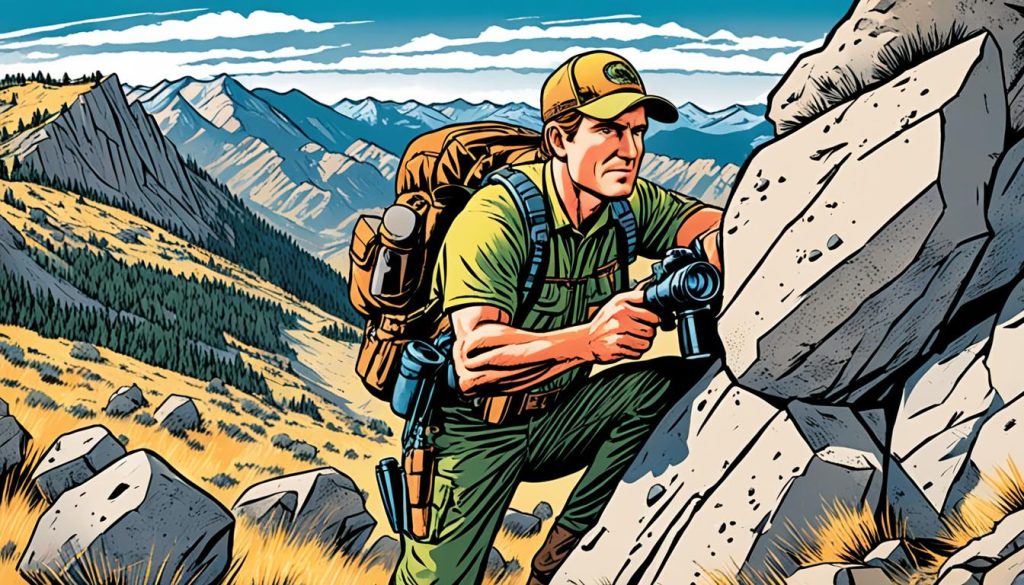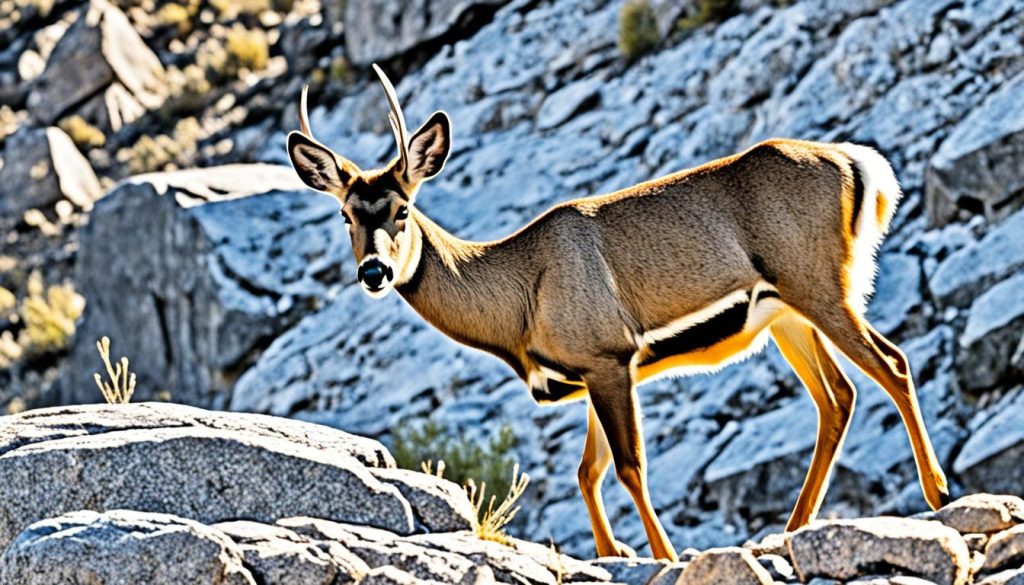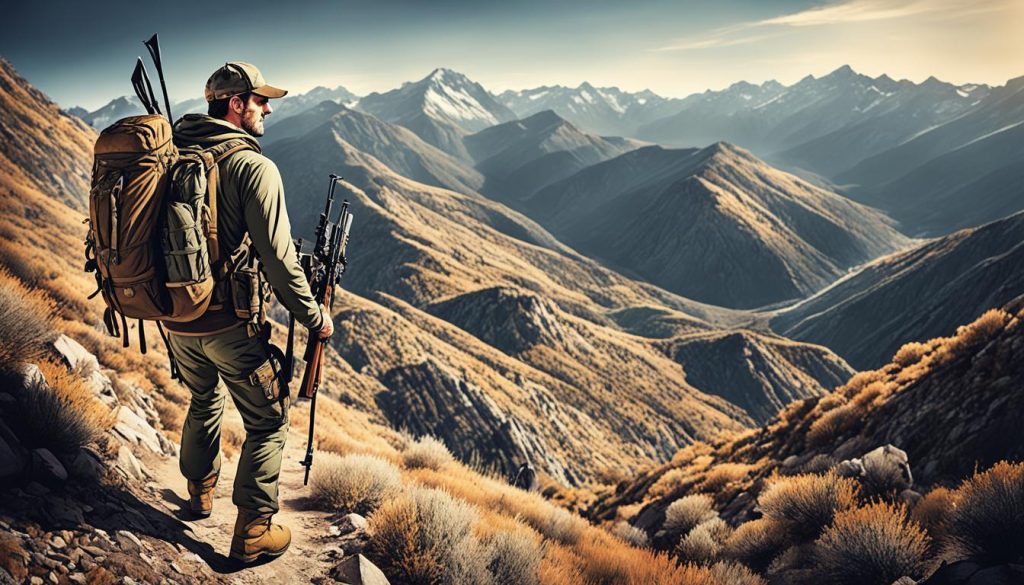In Northern Utah’s ranches, hunters pursue mule deer for more than one full day. The terrain is tricky and challenging. Hunting a wide, thirty-inch trophy buck in the late September was both exciting and hard for me.
Only deer above five years of age are hunted at the ranch. This presents a chance to catch the larger ones. Such a task requires one to be patient and keen-sighted, with help from seasoned guides. From Wild Country Outfitters, Colton Heward shared valuable insights on identifying the appropriate deer to hunt.

We moved cleverly, silently tracking, a key hunting strategy in the mountains. The payoff came with the capture of my big buck. This shows the significance of precision and skill in this pursuit. Scores of bucks, some beyond 200 inches, fall this way.
Guides are essential to spotting such massive deer. They utilize shrewd year-round hunting plans. My hunt illustrates that mule deer hunting in challenging areas requires wisdom, expertise, and skilled assistance.
Mule Deer Behavior and Habitat in Rugged Terrain
Understanding mule deer aids in hunting in challenging areas. Their unique traits and abilities make the hunt difficult yet enjoyable. Knowledge about their habitats, movement, and diet improves your hunting skills.
Behavior Patterns of Mule Deer
Spotting mule deer in challenging terrains is hard. They’re cautious, utilizing their keen senses and quick reflexes to escape threats. Especially in regions like Central Colorado, their activity increases in autumn, adding both difficulty and thrill to the hunt.

Understanding Mule Deer Habitats
Successful hunting requires knowledge of mule deer locations. Colorado boasts varied landscapes ranging from towering mountains to expansive aspen groves and wide fields of sage. The most lucrative spots to hunt may be difficult to reach. Familiarizing oneself with these locations improves hunting prospects.
Seasonal Movements and Feeding Habits
Mule deer shift their habitats with the seasons in search of food and suitable coverage. Early November in Colorado sees them on the move. Initiating from high-altitude locations and gradually moving downwards aids in tracking them. They prefer cooler, shaded areas and often feed where dense foliage is present.
| Aspect | Details |
|---|---|
| Popular Areas | Central Colorado, alpine ranges, aspen groves, sage-covered terrains |
| Peak Hunting Season | Early November (third rifle season) |
| Mature Buck Weight | Up to 300 pounds |
| Mule Deer Lifespan | 9-11 years |
| Migratory Factors | Food source changes, heavy snow |
Understanding mule deer behavior and preferred habitats can boost your hunting success in challenging terrains. This insight, combined with clever disguise and efficient recon, can make your hunting expedition enjoyable. Appreciate the pursuit of these incredible creatures.
Mule Deer Hunting Strategies for Rugged Terrain
Preparing for a mule deer hunt in difficult environments requires fitness, high-quality equipment, and practical knowledge. I’ve pursued them in austere terrains for lengthy periods. Trust me, preparation and patience make all the difference.

Being in top physical condition is essential for stalk-and-spot hunting. It’s about pushing through shrubbery and scaling hills, all while preserving stamina. Communication from Mark Drury emphasizes how important fitness is for wild mule deer hunts. This challenging terrain often requires both long treks and the transporting of gear. Knowing your terrain is also key.
To identify mule deer over massive patches of earth, high-quality binoculars and scopes – Leupold ones, for instance – are invaluable. Usually, identifiable signs are the white underbelly or their dark coats contrasting the surrounding terrain. Familiarity with a mule deer’s favorite resting spots is beneficial too, for instance, near the peaks of canyons or on ridges, generally around large boulders or beneath them.
Ensuring the right camouflage and equipment for your environment is also critical. Mark Drury himself swears by a Mossy Oak Mountain Country camo and Danner boots for both stealth and comfort. Your firearm should be capable of accurate long-distance shots since such situations might arise.
A spot and stalk strategy works well in the wilderness. It requires careful, silent advance towards the deer, checking wind direction, and finding the right hiding and vantage points. A rangefinder is also crucial for oftentimes, shots come from elevated or uneven surfaces.
Lastly, working in pairs can significantly increase your odds. This tactic often involves one person spotting the deer and the other one moving up on it. The ability to adjust the approach according to deer movement ensures a safer, more successful hunt. Combining all these strategies could lead to not only locating but also bagging a mature mule deer buck.
Preparation and Techniques for Mule Deer Hunting in Challenging Terrain
Smart planning, sturdy bodies, and solid gear can make mule deer hunting in challenging areas successful. Areas like Wade Lemon Hunting in Utah serve as proof that with right preparation and strategies, big victories are achievable. There, hunters took down bucks over 200 inches. This proves that good readiness and skill-set are critical for triumphs in places like these.
Physical Fitness and Stamina for Rugged Hunts
To scout through deer terrain, top fitness is crucial. You should prepare for steep hills, deep ravines, and dense foliage. Proper training before a hunt can increase your stamina and boost your probability of success.
Essential Gear and Equipment
Top-notch gear matters when hunting in tricky territories. Essential items include sturdy rifles, range finders, and durable boots. Spotting deer from afar using high-tech optics is beneficial. Hunt alongside a buddy, maintaining a 10-yard distance, to coax bucks from their grassy hideaways.
Effective Spot-and-Stalk Techniques
Carefully spotting and sneakily approaching deer is important in expansive terrains. Shots typically range from 15-75 yards proximity. Being aware that hefty bucks mingle with smaller deer introduces a clever aspect to hunts. Grasslands with deep gullies are ideal for applying these tactics.
Using Modern Technology and Optics
Groundbreaking devices like advanced scopes and GPS transform the hunting experience in challenging areas. They facilitate accurate shots from assorted angles and keep you orientated. When paired with strategic planning and understanding deer behaviors, these tools can significantly enhance your odds of a successful hunt.
Physically fit hunters equipped with the right gear, strategies, and technology can successfully trophy hunt mule deer in the West.
- 2024-2025 Rhode Island Hunting Seasons New Dates & Rules - August 10, 2024
- West Virginia Hunting Seasons 2024 New Dates & Regulations! - August 2, 2024
- 2024 Washington Hunting Season New Dates & Regulation! - July 27, 2024

